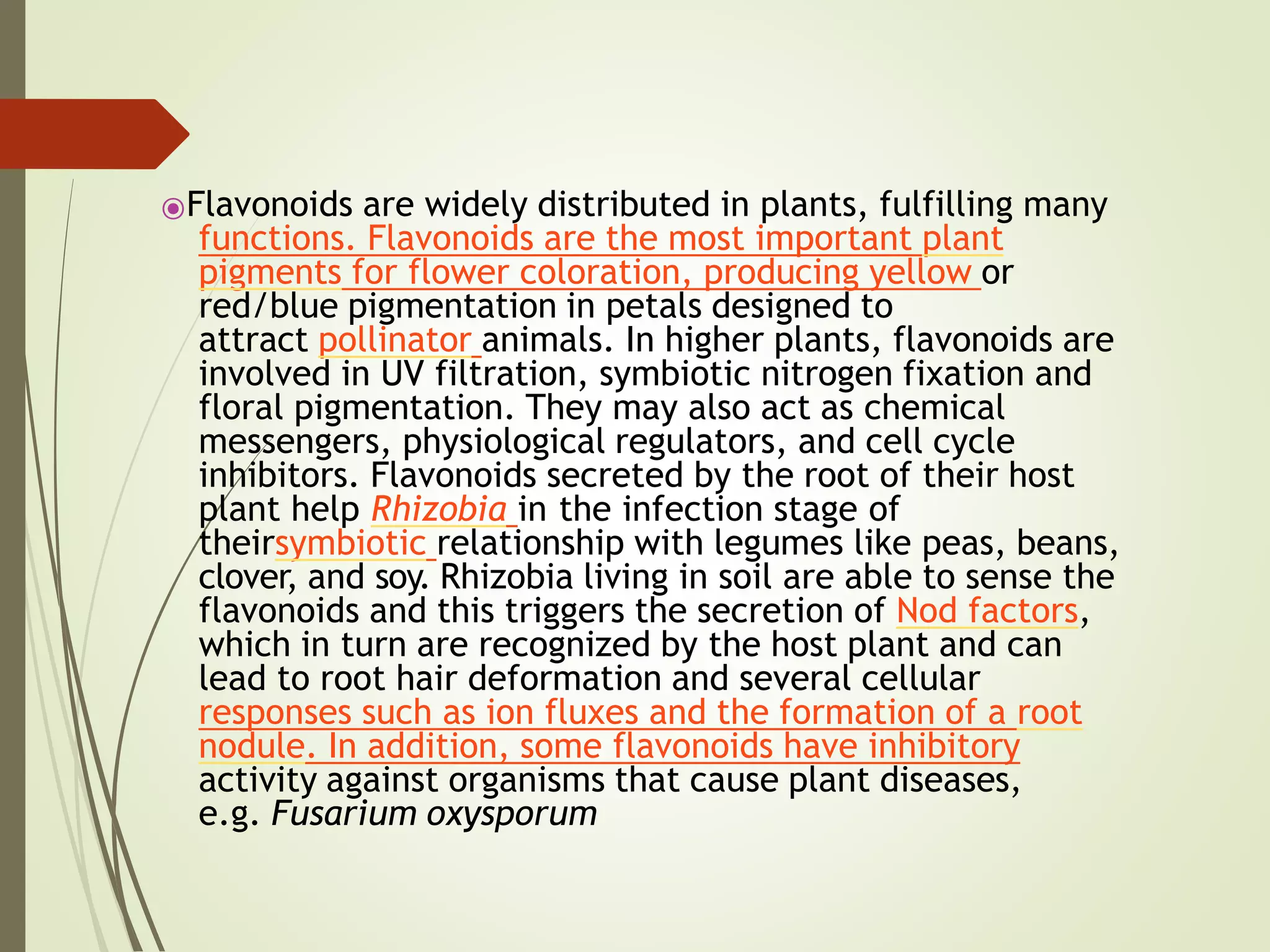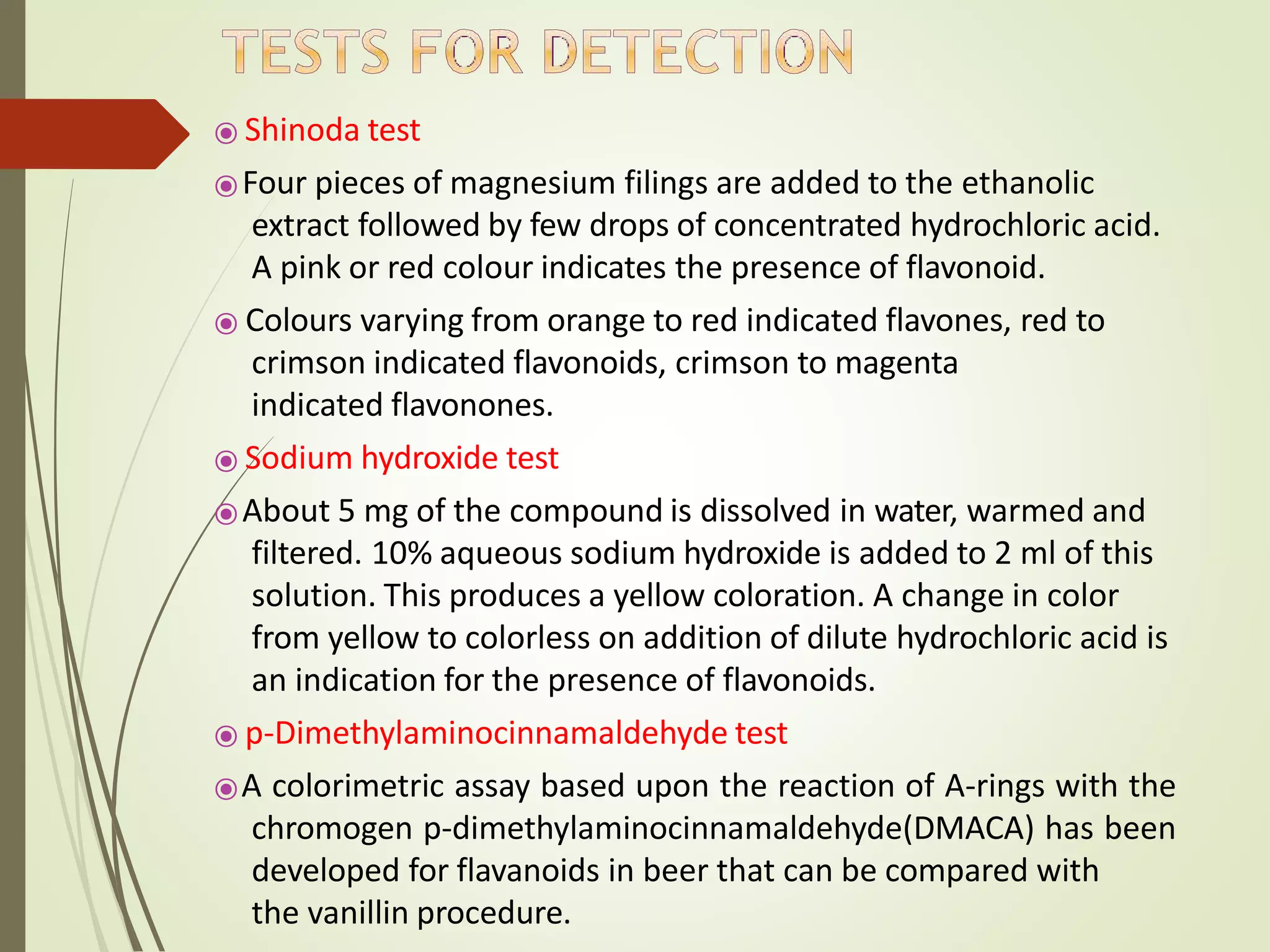Flavonoids are a class of plant secondary metabolites with antioxidant and color properties. They have a basic chemical structure of 15 carbon atoms arranged in a C6-C3-C6 skeleton. There are several subclasses of flavonoids including flavonoids, isoflavonoids, and neoflavonoids which differ based on their carbon ring structures. Flavonoids serve many important functions in plants involving flower coloration, UV filtration, nitrogen fixation, and disease resistance. They are widely found in fruits and vegetables and impart health benefits when consumed by humans.
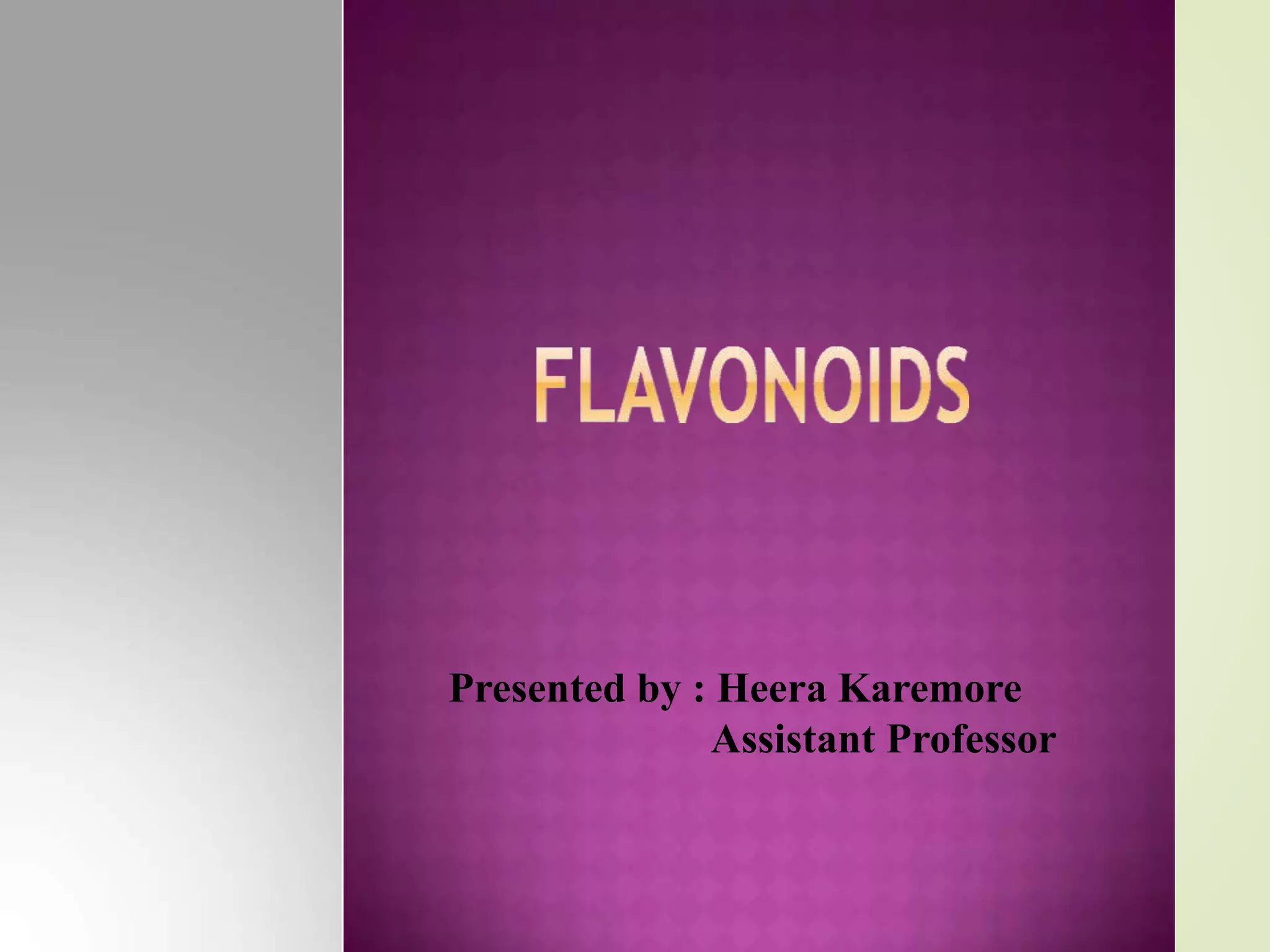

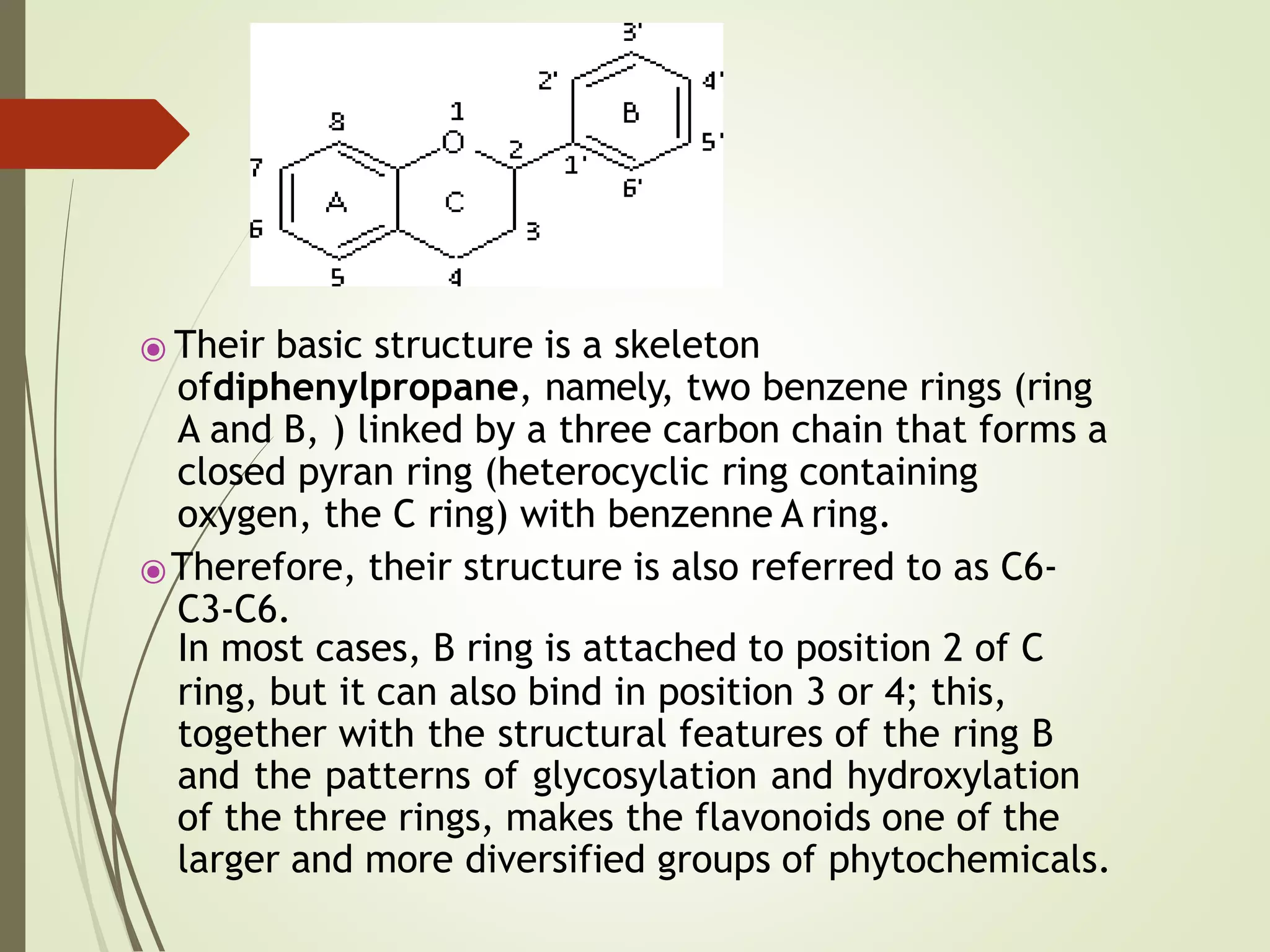
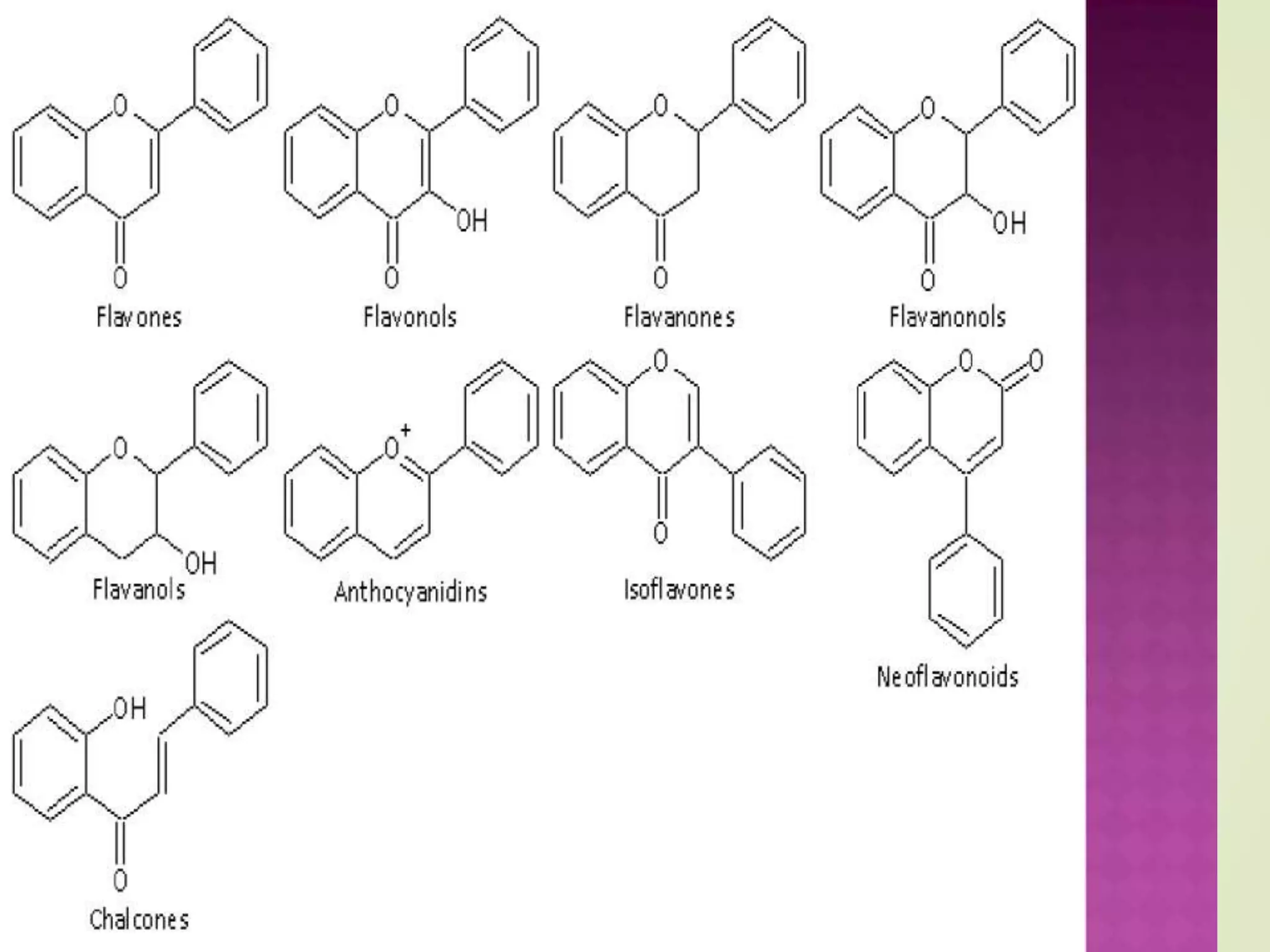



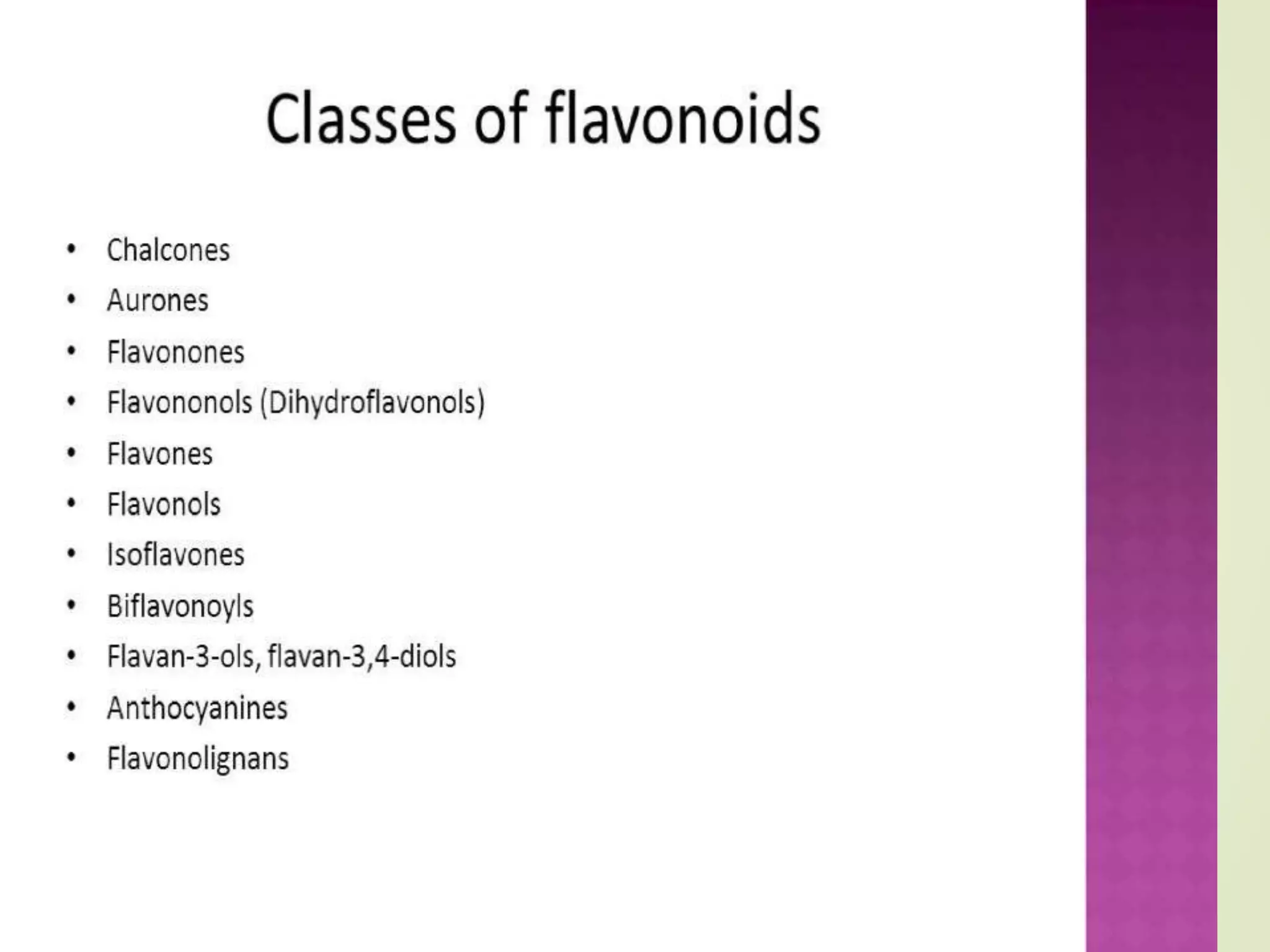
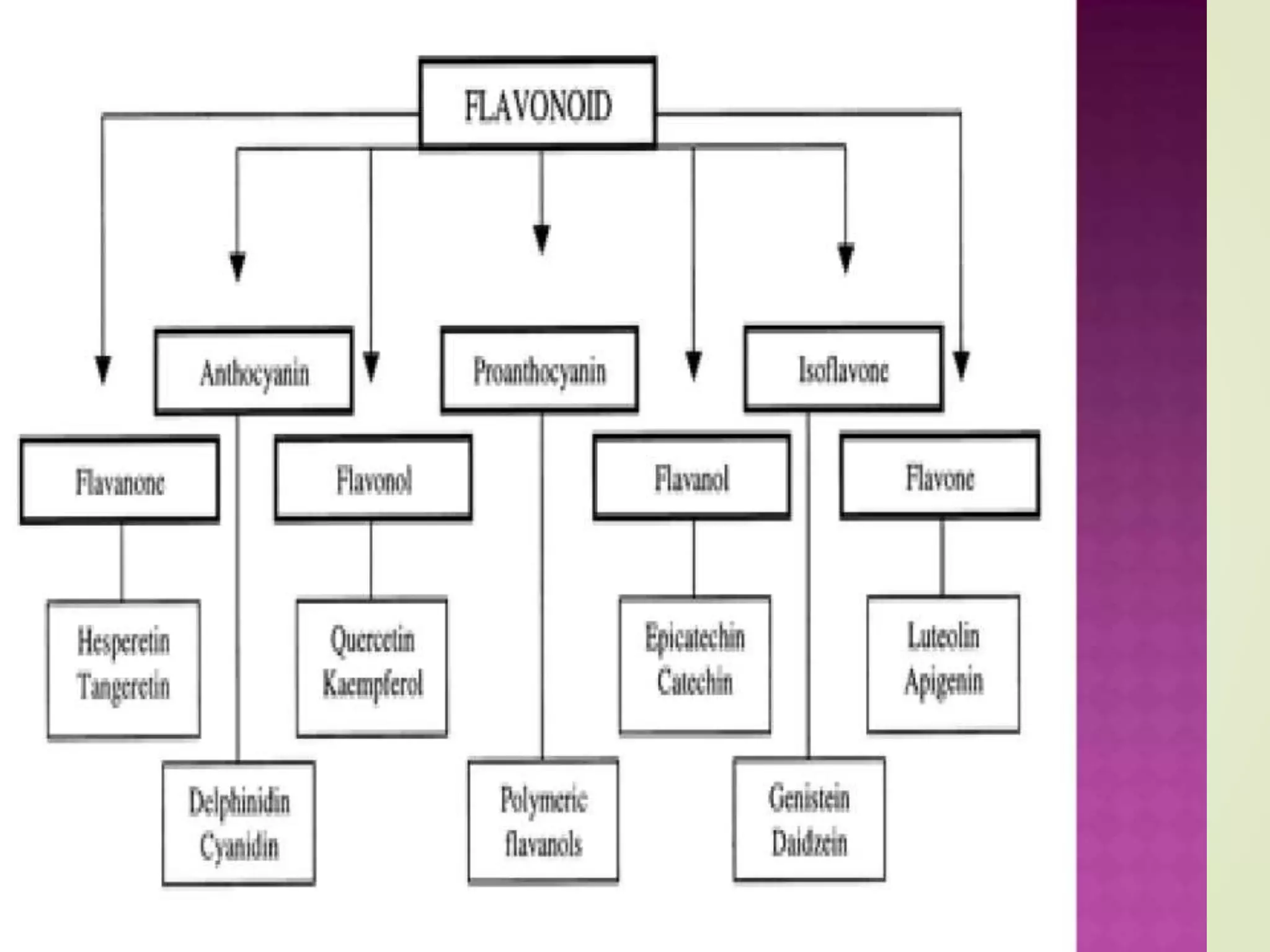
![⦿ Flavonoids (or bioflavonoids) (from the Latin word flavus
meaning yellow, their color in nature) are a class of plant and
fungus secondary metabolites.
⦿ Chemically, flavonoids have the general structure of a 15-carbon
skeleton, which consists of two phenyl rings (A and B) and
heterocyclic ring (C). This carbon structure can be abbreviated
C6-C3-C6. According to the IUPAC nomenclature,[1][2] they can be
classified into:
⦿ flavonoids or bioflavonoids
⦿ isoflavonoids, derived from 3-phenylchromen-4-one (3-
phenyl-1,4- benzopyrone) structure
⦿ neoflavonoids, derived from 4-phenylcoumarine (4-
phenyl-1,2- benzopyrone) structure
⦿ The three flavonoid classes above are all ketone-containing
compounds, and as such, are anthoxanthins (flavones and
flavonols). This class was the first to be termed bioflavonoids.
The
terms flavonoid and bioflavonoid have also been more loosely
used to describe non-ketone polyhydroxy polyphenol compounds
which are more specifically termed flavanoids. The three cycle
or heterocycles in the flavonoid backbone are generally called
ring A, B and C. Ring A usually shows a phloroglucinol
substitution pattern.](https://image.slidesharecdn.com/classsification-230204095722-34450230/75/Flavonoids-Classification-10-2048.jpg)
